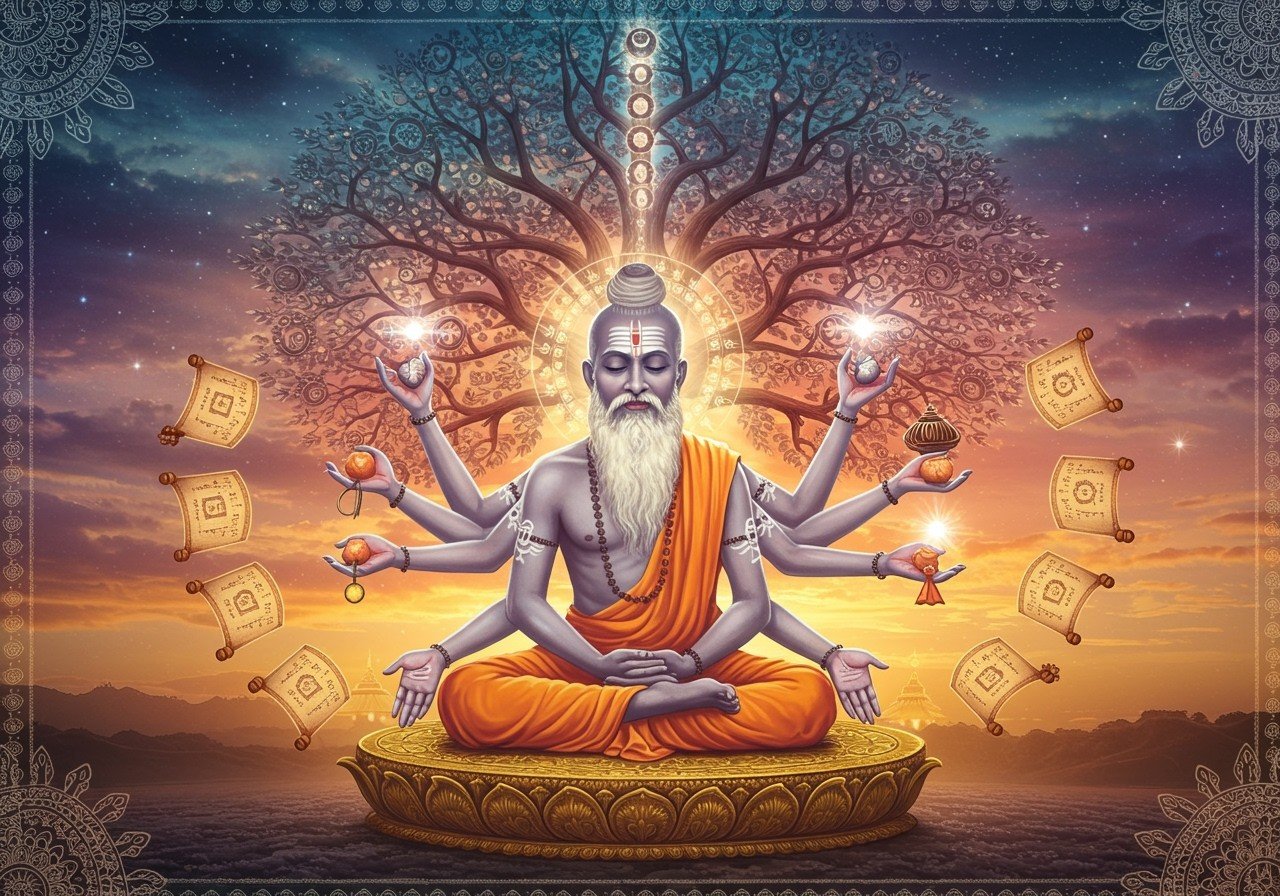
The Ashtavakra Gita, a timeless dialogue between the sage Ashtavakra and King Janaka, delves into the depths of self-realization and the nature of reality. Rooted in Advaita Vedanta philosophy, this ancient scripture offers profound insights into the illusion of duality and the path to liberation. This exploration navigates through its historical context, key concepts, and notable translations, providing a comparative analysis to illuminate its enduring wisdom.
Historical Context and Significance
The Ashtavakra Gita’s influence on Indian spiritual thought is significant. While its precise dating remains a subject of scholarly discussion, its roots trace back to the rich tapestry of Advaita Vedanta. Unlike the Bhagavad Gita, which emphasizes duty and devotion as paths to liberation, the Ashtavakra Gita focuses on the direct realization of one’s true nature. This emphasis on self-knowledge and inner peace through detachment distinguishes it within the landscape of spiritual texts. Figures like Adi Shankaracharya have contributed to its prominence, ensuring its continued relevance in philosophical discourse.
Key Concepts
At the core of the Ashtavakra Gita lies the profound concept of the unity of Atman (individual self) and Brahman (ultimate reality). This non-dualistic perspective asserts that our true nature is eternal consciousness, untouched by the limitations of the physical world. The concept of Maya, or illusion, plays a crucial role, veiling reality and shaping human perception. Understanding Maya is essential for self-realization. The Gita advocates for detachment from worldly desires (vairagya) as the pathway to enlightenment, emphasizing direct experience over ritualistic practices.
Notable Translations and Their Unique Strengths
Each translation of the Ashtavakra Gita offers a unique lens through which to understand its profound wisdom. Swami Nityaswarupananda’s translation, known for its clarity and adherence to traditional interpretations, provides a solid foundation for exploring the text. John Richards’ translation, available on Realization.org, offers a comprehensive exploration with detailed commentary, delving into the nuances of its philosophical concepts.
Thomas Byrom’s “The Heart of Awareness” stands out for its poetic beauty, capturing the essence of the Gita with elegant simplicity. Swami Chinmayananda’s translation excels in making complex concepts accessible, providing valuable insights for both seasoned scholars and those new to the text.
Osho’s Perspective
Osho’s interpretation of the Ashtavakra Gita infuses the ancient wisdom with a modern sensibility. He emphasizes experiential understanding over intellectual analysis, advocating for meditation as a powerful tool for self-discovery. Osho’s commentary on detachment resonates with contemporary seekers, bridging the gap between ancient teachings and modern life. His engaging narrative style, often incorporating humor and relatable anecdotes, makes the Gita’s profound message accessible to a wider audience.
Comparative Analysis
The various translations of the Ashtavakra Gita offer a fascinating study in interpretation. Traditional approaches often prioritize literal accuracy, while modern interpretations embrace a greater degree of creative license. Cultural context plays a significant role, shaping how the text’s ideas are conveyed and understood. Linguistic choices also influence the reader’s experience, highlighting the complexities of translating ancient wisdom for contemporary audiences. The availability of commentaries further enriches the study of the Gita, offering diverse perspectives and bridging the gap between ancient thought and modern understanding. Through exploration of different translations, readers embark on a personal journey of discovery, connecting with the text in ways that resonate deeply.
How Poojn.in Supports Your Spiritual Journey
Poojn.in, India’s leading provider of cultural and spiritual goods, offers a wide selection of resources to enhance your study of the Ashtavakra Gita. We provide authentic puja items, including brass and copper items, pure cotton vastras, natural incense, and dhoop, to create a sacred space for your practice. Explore our collection of clay diyas, sacred threads, and other items to deepen your connection with this ancient wisdom. Visit Poojn.in to discover how we can support your spiritual journey.
Embracing the Wisdom
The Ashtavakra Gita invites us on a timeless journey of self-discovery. Its teachings offer a pathway to inner peace, guiding us beyond the illusions of the material world. Whether you choose the traditional clarity of Swami Nityaswarupananda, the poetic elegance of Thomas Byrom, or the modern insights of Osho, the Gita’s message resonates deeply, offering profound wisdom for seekers of all backgrounds. As we delve into its depths, we move closer to understanding our true nature, embracing the unity of Atman and Brahman.
Many other translations of the Gita are available. One popular choice is “The Heart of Awareness” by Thomas Byrom, praised for its clarity and poetic style. Another is Swami Nityaswarupananda’s translation, known for its authenticity and accessibility.
Mindfulness Meditation
The Bhagavad Gita’s Impact on Modern Life
Jyotisar: The Bhagavad Gita’s Origin
Jyotisar Sarovar: A Spiritual Journey


